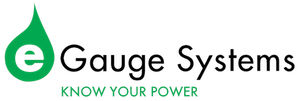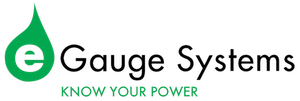By Ben Rather
What is Tenant Monitoring?
Tenant monitoring is a specialized practice used to visualize energy consumption by individual tenants within larger, multi-tenant buildings. This practice allows for detailed tracking of energy use across different units in various types of buildings, such as apartment complexes, office buildings, and multi-business commercial spaces.
Why is Tenant Monitoring Important?
The increasing emphasis on energy transition and efficiency has led many companies and governments to establish energy benchmarks for both new and existing buildings. Tenant monitoring plays a crucial role in achieving these goals by providing energy efficiency conscious property managers with detailed insights into where and how energy is being used within a building. This granular understanding enables the creation of actionable plans to improve energy efficiency and reduce consumption while staying in compliance with regulatory standards and alignment with sustainability goals, the essential components of tenant monitoring.
Tenant monitoring also involves generating detailed reports for tenants, offering insights into their energy usage, and highlighting trends and areas for potential savings. Accurate billing is a key aspect, ensuring that tenants are charged based on their actual energy consumption rather than estimates or averages. This transparency not only fosters accountability but also encourages tenants to adopt energy-saving behaviors.
Examples of Tenant Monitoring Applications
Tenant monitoring can be implemented in various types of multi-tenant buildings, including:
- Apartment Buildings: Each apartment’s energy use is tracked individually, helping residents manage their consumption and costs.
- Office Buildings: Businesses can monitor their energy use to optimize operations and reduce overhead.
- Multi-Business Commercial Spaces: Different businesses within a shared space can be billed accurately based on their actual energy use.
Implementation of Tenant Monitoring
Implementing energy tenant monitoring involves several steps. It starts with an assessment of the building’s energy infrastructure to identify the need for sub-metering or upgrades. This is followed by the installation of metering devices and integration of the data with a management platform capable of analyzing and reporting on energy usage. Engaging tenants and educating them about the benefits of energy monitoring is crucial, as is the ongoing management and adjustment of strategies to optimize energy consumption.
Who Can Visualize the Data and How?
Access to the data collected by tenant monitoring systems is controlled by an admin, who can grant various levels of permissions to users. For example:
- Admin: Has full access to all data and can manage permissions.
- Tenants: Can be given access to view only their own unit’s data. This ensures privacy and security, as tenants cannot see the energy usage of others.
Both admins and tenants use the same web-based User Interface to visualize the data, although their access levels and the data they have permission to see will differ.
Monitoring vs. Billing
Providing accurate energy data in real time using energy data acquisition devices like smart submeters, although crucial, is just part of a more complex process when it comes to billing tenants for their energy consumption. It requires the integration of the acquired data with a sophisticated billing system that can automatically calculate each tenant’s energy cost based not only on the actual usage but also the exact time and its direct relation to dynamic demand rates, reducing the risk of errors and ensuring tenants are billed accurately and fairly.
Billing services are indispensable for efficient and accurate energy tenant monitoring. They automate and streamline the billing process, enhance transparency, and provide valuable insights into energy consumption, ultimately leading to better energy management and tenant satisfaction.
Conclusion
The benefits of tenant monitoring are substantial. It leads to cost savings for both property managers and tenants through more efficient energy use and accurate billing. Enhanced transparency and control over energy consumption can improve tenant satisfaction and retention. Furthermore, identifying and addressing inefficiencies can contribute to better overall building performance, and reducing energy consumption helps lower greenhouse gas emissions.
To learn more about eGauge products that can help implement tenant monitoring, visit our store at https://store.egauge.net/ today.















